 There are several reasons why shoes may not fit correctly. These may include having toenails that are not trimmed properly or having medical conditions such as diabetes and poor circulation. Additionally, research has shown the feet may change sizes as the aging process occurs and it is advised to properly measure your feet before purchasing shoes. When a shoe is selected that is similar to the shape of your foot, the desired comfort level may be easier to attain. There are a few simple steps that may be implemented to ensure a properly fitted shoe. These may include expecting the shoe to feel comfortable when initially tried on, making sure there is adequate room for the longest toe to fit easily in, and walking in the shoes before making the decision to buy them. If you would like additional information about choosing the correct shoe size, it is suggested to speak with a podiatrist.
There are several reasons why shoes may not fit correctly. These may include having toenails that are not trimmed properly or having medical conditions such as diabetes and poor circulation. Additionally, research has shown the feet may change sizes as the aging process occurs and it is advised to properly measure your feet before purchasing shoes. When a shoe is selected that is similar to the shape of your foot, the desired comfort level may be easier to attain. There are a few simple steps that may be implemented to ensure a properly fitted shoe. These may include expecting the shoe to feel comfortable when initially tried on, making sure there is adequate room for the longest toe to fit easily in, and walking in the shoes before making the decision to buy them. If you would like additional information about choosing the correct shoe size, it is suggested to speak with a podiatrist.
Getting the right shoe size is an important part of proper foot health. Seek the assistance of Dr. Barbara Kilkenny from Barbara A. Kilkenny, DPM. Our doctor will provide the care you need to keep you pain-free and on your feet.
Getting the Right Shoe Size
There are many people who wear shoes that are the incorrect size, negatively affecting their feet and posture. Selecting the right shoes is not a difficult process, so long as you keep several things in mind when it comes to choosing the right pair.
As our feet hold our body weight and keep us moving, it is important to treat them right. Picking the right pair of shoes can provide your feet comfort and mobility without pain.
If you have any questions, please feel free to contact our office located in Southbury, CT. We offer the newest diagnostic and treatment technologies for all your foot care needs.
Read more about Getting the Right Shoe Size: To Keep Your Feet Happy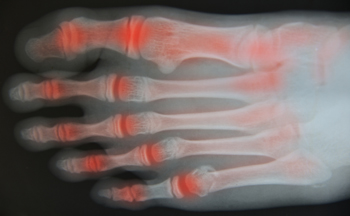 If you are experiencing pain and discomfort in your big toe, you may have a foot condition that is known as toe arthritis. It may be caused by wearing shoes that are too tight and may not have adequate room for the toes to move about in. One of the first signs that may be indicative of toe arthritis may be pain that is felt in the toes. Many people feel stiffness in the toes, and this may be a result of the diminished cartilage that is located between the joints, in addition to obvious redness and swelling of the toes and surrounding area. If you are afflicted with this condition, it may be difficult to perform daily activities that may include walking or standing for extended periods of time. If you are experiencing arthritis in your feet or toes, it is suggested to speak with a podiatrist who can advise you on correct treatment options.
If you are experiencing pain and discomfort in your big toe, you may have a foot condition that is known as toe arthritis. It may be caused by wearing shoes that are too tight and may not have adequate room for the toes to move about in. One of the first signs that may be indicative of toe arthritis may be pain that is felt in the toes. Many people feel stiffness in the toes, and this may be a result of the diminished cartilage that is located between the joints, in addition to obvious redness and swelling of the toes and surrounding area. If you are afflicted with this condition, it may be difficult to perform daily activities that may include walking or standing for extended periods of time. If you are experiencing arthritis in your feet or toes, it is suggested to speak with a podiatrist who can advise you on correct treatment options.
Arthritis can be a difficult condition to live with. If you are seeking treatment, contact Dr. Barbara Kilkenny from Barbara A. Kilkenny, DPM. Our doctor can provide the care you need to keep you pain-free and on your feet.
Arthritic Foot Care
Arthritis is a term that is commonly used to describe joint pain. The condition itself can occur to anyone of any age, race, or gender, and there are over 100 types of it. Nevertheless, arthritis is more commonly found in women compared to men, and it is also more prevalent in those who are overweight. The causes of arthritis vary depending on which type of arthritis you have. Osteoarthritis for example, is often caused by injury, while rheumatoid arthritis is caused by a misdirected immune system.
Symptoms
Arthritic symptoms range in severity, and they may come and go. Some symptoms stay the same for several years but could potentially get worse with time. Severe cases of arthritis can prevent its sufferers from performing daily activities and make walking difficult.
Risk Factors
If you suspect your arthritis is affecting your feet, it is crucial that you see a podiatrist immediately. Your doctor will be able to address your specific case and help you decide which treatment method is best for you.
If you have any questions, please feel free to contact our office located in Southbury, CT. We offer the newest diagnostic and treatment technologies for all your foot care needs.
Read more about How to Care for Your Arthritic Foot It is important to maintain proper care for your feet, and this may be especially true of the elderly population. Research has shown the natural cushioning in the feet may diminish as the aging process occurs, and the toenails and skin may appear to become dry and brittle. There are several ways to practice good foot care, and these may include looking at your feet closely on a frequent basis, which may aid in noticing any blisters or cuts, wearing footwear that feels comfortable, and performing mild stretches, which may improve circulation. Additionally, washing and drying the feet daily may be helpful in preventing or controlling unpleasant foot odor. If you would like additional information about how to take care of elderly feet, please consult with a podiatrist.
It is important to maintain proper care for your feet, and this may be especially true of the elderly population. Research has shown the natural cushioning in the feet may diminish as the aging process occurs, and the toenails and skin may appear to become dry and brittle. There are several ways to practice good foot care, and these may include looking at your feet closely on a frequent basis, which may aid in noticing any blisters or cuts, wearing footwear that feels comfortable, and performing mild stretches, which may improve circulation. Additionally, washing and drying the feet daily may be helpful in preventing or controlling unpleasant foot odor. If you would like additional information about how to take care of elderly feet, please consult with a podiatrist.
Proper foot care is something many older adults forget to consider. If you have any concerns about your feet and ankles, contact Dr. Barbara Kilkenny from Barbara A. Kilkenny, DPM. Our doctor can provide the care you need to keep you pain-free and on your feet.
The Elderly and Their Feet
As we age we start to notice many changes in our body, but the elder population may not notice them right away. Medical conditions may prevent the elderly to take notice of their foot health right away. Poor vision is a lead contributor to not taking action for the elderly.
Common Conditions
Susceptible Infections
Diabetes and poor circulation can cause general loss of sensitivity over the years, turning a simple cut into a serious issue.
If you have any questions please feel free to contact our office located in Southbury, CT. We offer the newest diagnostic and treatment technologies for all your foot and ankle needs.
Read more about Elderly Foot Care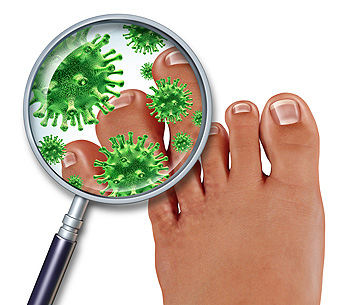 The medical condition that is referred to as athlete’s foot will typically affect many different types of people regardless if they are athletes. The tinea fungus is responsible for this uncomfortable ailment and will survive in moist and warm areas. It is known to be extremely contagious, and it often lives in public pools, showers, and surrounding areas. The noticeable symptoms may include cracked and peeling skin between the toes, dry or raw skin on your feet, or an itchy sensation that may affect the entire foot. There may be pre-existing medical conditions that may include diabetes or a weakened immune system, which can contribute to the onset of athlete’s foot. If you feel you may have developed this ailment, it is suggested to seek the counsel of a podiatrist who can perform a proper diagnosis and correct treatment.
The medical condition that is referred to as athlete’s foot will typically affect many different types of people regardless if they are athletes. The tinea fungus is responsible for this uncomfortable ailment and will survive in moist and warm areas. It is known to be extremely contagious, and it often lives in public pools, showers, and surrounding areas. The noticeable symptoms may include cracked and peeling skin between the toes, dry or raw skin on your feet, or an itchy sensation that may affect the entire foot. There may be pre-existing medical conditions that may include diabetes or a weakened immune system, which can contribute to the onset of athlete’s foot. If you feel you may have developed this ailment, it is suggested to seek the counsel of a podiatrist who can perform a proper diagnosis and correct treatment.
Athlete’s Foot
Athlete’s foot is often an uncomfortable condition to experience. Thankfully, podiatrists specialize in treating athlete’s foot and offer the best treatment options. If you have any questions about athlete’s foot, consult with Dr. Barbara Kilkenny from Barbara A. Kilkenny, DPM. Our doctor will assess your condition and provide you with quality treatment.
What Is Athlete’s Foot?
Tinea pedis, more commonly known as athlete’s foot, is a non-serious and common fungal infection of the foot. Athlete’s foot is contagious and can be contracted by touching someone who has it or infected surfaces. The most common places contaminated by it are public showers, locker rooms, and swimming pools. Once contracted, it grows on feet that are left inside moist, dark, and warm shoes and socks.
Prevention
The most effective ways to prevent athlete’s foot include:
Symptoms
Athlete’s foot initially occurs as a rash between the toes. However, if left undiagnosed, it can spread to the sides and bottom of the feet, toenails, and if touched by hand, the hands themselves. Symptoms include:
Diagnosis and Treatment
Diagnosis is quick and easy. Skin samples will be taken and either viewed under a microscope or sent to a lab for testing. Sometimes, a podiatrist can diagnose it based on simply looking at it. Once confirmed, treatment options include oral and topical antifungal medications.
If you have any questions, please feel free to contact our office located in Southbury, CT. We offer the newest diagnostic and treatment technologies for all your foot care needs.
Read more about How to Deal with Athlete's Foot
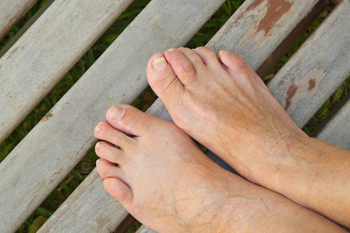 If you notice a sizable bump on the second toe of your foot, you may have what can develop into a hammertoe. Many people experience a bunion first, and this will typically occur on the side of the big toe. As this condition develops, the toes push against each other causing the middle toe to bend downward, and this may cause pain and discomfort. Research has shown this condition may be more apt to develop in people who are experiencing arthritis in the bones of the feet. There may be preventive measures to halt this ailment from happening, including wearing shoes that have adequate room for the toes to move about it in. Moderate relief may be found by performing specific exercises that can stretch the toes. One example would be to try soaking the feet in warm water daily, followed by pointing the toes. This may benefit in stretching the tendons of the toe. If you feel you are developing this condition, please consult with a podiatrist for treatment options that are correct for you.
If you notice a sizable bump on the second toe of your foot, you may have what can develop into a hammertoe. Many people experience a bunion first, and this will typically occur on the side of the big toe. As this condition develops, the toes push against each other causing the middle toe to bend downward, and this may cause pain and discomfort. Research has shown this condition may be more apt to develop in people who are experiencing arthritis in the bones of the feet. There may be preventive measures to halt this ailment from happening, including wearing shoes that have adequate room for the toes to move about it in. Moderate relief may be found by performing specific exercises that can stretch the toes. One example would be to try soaking the feet in warm water daily, followed by pointing the toes. This may benefit in stretching the tendons of the toe. If you feel you are developing this condition, please consult with a podiatrist for treatment options that are correct for you.
Hammertoe
Hammertoes can be a painful condition to live with. For more information, contact Dr. Barbara Kilkenny from Barbara A. Kilkenny, DPM. Our doctor will answer any of your foot- and ankle-related questions.
Hammertoe is a foot deformity that affects the joints of the second, third, fourth, or fifth toes of your feet. It is a painful foot condition in which these toes curl and arch up, which can often lead to pain when wearing footwear.
Symptoms
Causes
Genetics – People who are genetically predisposed to hammertoe are often more susceptible
Arthritis – Because arthritis affects the joints in your toes, further deformities stemming from arthritis can occur
Trauma – Direct trauma to the toes could potentially lead to hammertoe
Ill-fitting shoes – Undue pressure on the front of the toes from ill-fitting shoes can potentially lead to the development of hammertoe
Treatment
Orthotics – Custom made inserts can be used to help relieve pressure placed on the toes and therefore relieve some of the pain associated with it
Medications – Oral medications such as anti-inflammatories or NSAIDs could be used to treat the pain and inflammation hammertoes causes. Injections of corticosteroids are also sometimes used
Surgery – In more severe cases where the hammertoes have become more rigid, foot surgery is a potential option
If you have any questions please contact our office located in Southbury, CT. We offer the newest diagnostic and treatment technologies for all your foot and ankle needs.
Read more about Hammertoe Many people who enjoy running may experience common foot conditions that may be associated with this sport. A portion of the foot that is commonly affected is the the plantar fascia. This is identified as the tissue that is located on the bottom of the foot and connects the heel bone to the toes. If this should become torn or injured, it will most likely produce severe pain and discomfort, and is referred to as plantar fasciitis. A condition known as metatarsalgia may be a result of intense running, and most often affects the middle toes. Patients have equated this discomfort to feeling like there are small stones in their shoes or on the soles of the feet. Additionally, an uncomfortable condition known as Morton’s neuroma may be mistaken with metatarsalgia, but will have additional symptoms that may include burning, tingling, or sharp pains in the toes and surrounding area. It is suggested to consult with a podiatrist if you are experiencing any of these ailments so proper treatment can begin.
Many people who enjoy running may experience common foot conditions that may be associated with this sport. A portion of the foot that is commonly affected is the the plantar fascia. This is identified as the tissue that is located on the bottom of the foot and connects the heel bone to the toes. If this should become torn or injured, it will most likely produce severe pain and discomfort, and is referred to as plantar fasciitis. A condition known as metatarsalgia may be a result of intense running, and most often affects the middle toes. Patients have equated this discomfort to feeling like there are small stones in their shoes or on the soles of the feet. Additionally, an uncomfortable condition known as Morton’s neuroma may be mistaken with metatarsalgia, but will have additional symptoms that may include burning, tingling, or sharp pains in the toes and surrounding area. It is suggested to consult with a podiatrist if you are experiencing any of these ailments so proper treatment can begin.
Foot Pain
Foot pain can be extremely painful and debilitating. If you have a foot pain, consult with Dr. Barbara Kilkenny from Barbara A. Kilkenny, DPM. Our doctor will assess your condition and provide you with quality foot and ankle treatment.
Causes
Foot pain is a very broad condition that could be caused by one or more ailments. The most common include:
Diagnosis
To figure out the cause of foot pain, podiatrists utilize several different methods. This can range from simple visual inspections and sensation tests to X-rays and MRI scans. Prior medical history, family medical history, and any recent physical traumatic events will all be taken into consideration for a proper diagnosis.
Treatment
Treatment depends upon the cause of the foot pain. Whether it is resting, staying off the foot, or having surgery; podiatrists have a number of treatment options available for foot pain.
If you have any questions, please feel free to contact our office located in Southbury, CT. We offer the newest diagnostic and treatment technologies for all your foot care needs.
Read more about Foot Pain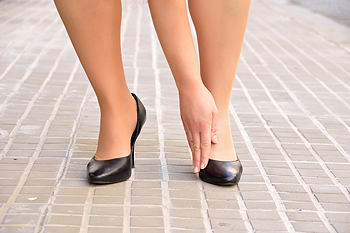 There are many women who enjoy wearing high heels despite knowing foot pain may develop from wearing these specific type of shoes. Research has shown that when the heel is high, the arch in the foot may become inflamed and this may typically cause pain and discomfort. If high heels are worn on a frequent basis, the toes may undergo stress, and this may possibly cause corns and calluses to develop. The likelihood of incurring a fall may increase as a result of the line of gravity being altered by the height of the heel. There are several ways to enjoy wearing high heels while keeping your feet as comfortable as possible. These may include slipping off your shoes at an appropriate time and performing gentle stretching exercises, including pointing, flexing and rolling your ankles. Additionally, circulation in the feet may be increased by wiggling the toes. Your feet may benefit by wearing shoes that are more comfortable the following day, which may allow the foot muscles to rest. Please speak to a podiatrist if you would like additional information concerning the dangers of wearing high heels.
There are many women who enjoy wearing high heels despite knowing foot pain may develop from wearing these specific type of shoes. Research has shown that when the heel is high, the arch in the foot may become inflamed and this may typically cause pain and discomfort. If high heels are worn on a frequent basis, the toes may undergo stress, and this may possibly cause corns and calluses to develop. The likelihood of incurring a fall may increase as a result of the line of gravity being altered by the height of the heel. There are several ways to enjoy wearing high heels while keeping your feet as comfortable as possible. These may include slipping off your shoes at an appropriate time and performing gentle stretching exercises, including pointing, flexing and rolling your ankles. Additionally, circulation in the feet may be increased by wiggling the toes. Your feet may benefit by wearing shoes that are more comfortable the following day, which may allow the foot muscles to rest. Please speak to a podiatrist if you would like additional information concerning the dangers of wearing high heels.
High heels have a history of causing foot and ankle problems. If you have any concerns about your feet or ankles, contact Dr. Barbara Kilkenny from Barbara A. Kilkenny, DPM. Our doctor can provide the care you need to keep you pain-free and on your feet.
Effects of High Heels on the Feet
High heels are popular shoes among women because of their many styles and societal appeal. Despite this, high heels can still cause many health problems if worn too frequently.
Which Parts of My Body Will Be Affected by High Heels?
What Kinds of Foot Problems Can Develop from Wearing High Heels?
How Can I Still Wear High Heels and Maintain Foot Health?
If you want to wear high heeled shoes, make sure that you are not wearing them every day, as this will help prevent long term physical problems. Try wearing thicker heels as opposed to stilettos to distribute weight more evenly across the feet. Always make sure you are wearing the proper shoes for the right occasion, such as sneakers for exercising. If you walk to work, try carrying your heels with you and changing into them once you arrive at work. Adding inserts to your heels can help cushion your feet and absorb shock. Full foot inserts or metatarsal pads are available.
If you have any questions please feel free to contact our office located in Southbury, CT. We offer the newest diagnostic and treatment technologies for all your foot and ankle needs.
Read more about Effect of High Heels on the Feet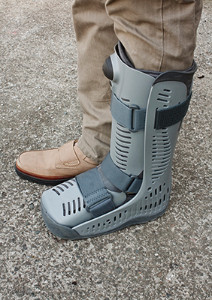 Research has shown the ankle is comprised of three bones that interlock together. If an injury is endured that fractures one or more of these bones, it is often referred to as a broken ankle. There are several ligaments and tendons that are attached to these specific bones and may become displaced if the ankle becomes fractured. This typically may occur if a fall has happened and the ankle twists unnaturally. The noticeable symptoms may often include severe pain in and around the affected ankle, unsightly bruising, or difficulty in moving the toes. There are several ways to treat this condition, including wearing a protective boot, taping or wrapping the ankle, which may provide additional support, or possible surgery, which is often determined by the severity of the fracture. If you have broken your ankle, it’s advised to speak with a podiatrist as quickly as possible so the correct choice of treatment can begin.
Research has shown the ankle is comprised of three bones that interlock together. If an injury is endured that fractures one or more of these bones, it is often referred to as a broken ankle. There are several ligaments and tendons that are attached to these specific bones and may become displaced if the ankle becomes fractured. This typically may occur if a fall has happened and the ankle twists unnaturally. The noticeable symptoms may often include severe pain in and around the affected ankle, unsightly bruising, or difficulty in moving the toes. There are several ways to treat this condition, including wearing a protective boot, taping or wrapping the ankle, which may provide additional support, or possible surgery, which is often determined by the severity of the fracture. If you have broken your ankle, it’s advised to speak with a podiatrist as quickly as possible so the correct choice of treatment can begin.
Broken ankles need immediate treatment. If you are seeking treatment, contact Dr. Barbara Kilkenny from Barbara A. Kilkenny, DPM. Our doctor can provide the care you need to keep you pain-free and on your feet.
Broken Ankles
A broken ankle is experienced when a person fractures their tibia or fibula in the lower leg and ankle area. Both of these bones are attached at the bottom of the leg and combine to form what we know to be our ankle.
When a physician is referring to a break of the ankle, he or she is usually referring to a break in the area where the tibia and fibula are joined to create our ankle joint. Ankles are more prone to fractures because the ankle is an area that suffers a lot of pressure and stress. There are some obvious signs when a person experiences a fractured ankle, and the following symptoms may be present.
Symptoms of a Fractured Ankle
If you suspect an ankle fracture, it is recommended to seek treatment as soon as possible. The sooner you have your podiatrist diagnose the fracture, the quicker you’ll be on the way towards recovery.
If you have any questions, please feel free to contact our office located in Southbury, CT. We offer the newest diagnostic and treatment technologies for all your foot care needs.
Read more about All About Broken Ankle For people who have poor circulation, experiencing “pins and needles” and tingling are common sensations. It is not considered to be a disease, and research has shown it may be indicative of serious illnesses including heart conditions, or PAD, which is known as peripheral artery disease. When the blood circulates properly throughout the body, oxygen and essential nutrients flow easily to the organs. Poor circulation hinders the ability for this to occur. There are several symptoms that are associated with this condition, including cold feet, cramps in the muscles, lack of energy, or throbbing. History has shown that poor health habits may contribute to the onset of this ailment. These may include smoking, eating poorly, or being sedentary for long periods at a time. If you feel you have poor circulation, it’s suggested to speak with a podiatrist for possible treatment options. These may include wearing compression socks, taking prescription medicine, or surgery.
For people who have poor circulation, experiencing “pins and needles” and tingling are common sensations. It is not considered to be a disease, and research has shown it may be indicative of serious illnesses including heart conditions, or PAD, which is known as peripheral artery disease. When the blood circulates properly throughout the body, oxygen and essential nutrients flow easily to the organs. Poor circulation hinders the ability for this to occur. There are several symptoms that are associated with this condition, including cold feet, cramps in the muscles, lack of energy, or throbbing. History has shown that poor health habits may contribute to the onset of this ailment. These may include smoking, eating poorly, or being sedentary for long periods at a time. If you feel you have poor circulation, it’s suggested to speak with a podiatrist for possible treatment options. These may include wearing compression socks, taking prescription medicine, or surgery.
Poor circulation is a serious condition and needs immediate medical attention. If you have any concerns with poor circulation in your feet contact Dr. Barbara Kilkenny of Barbara A. Kilkenny, DPM. Our doctor will treat your foot and ankle needs.
Poor Circulation in the Feet
Poor blood circulation in the feet and legs is can be caused by peripheral artery disease (PAD), which is the result of a buildup of plaque in the arteries.
Plaque buildup or atherosclerosis results from excess calcium and cholesterol in the bloodstream. This can restrict the amount of blood which can flow through the arteries. Poor blood circulation in the feet and legs are sometimes caused by inflammation in the blood vessels, known as vasculitis.
Causes
Lack of oxygen and oxygen from poor blood circulation restricts muscle growth and development. It can also cause:
Those who have diabetes or smoke are at greatest risk for poor circulation, as are those who are over 50. If you have poor circulation in the feet and legs it may be caused by PAD and is important to make changes to your lifestyle in order to reduce risk of getting a heart attack or stroke. Exercise and maintaining a healthy lifestyle will dramatically improve conditions.
As always, see a podiatrist as he or she will assist in finding a regimen that suits you. A podiatrist can also prescribe you any needed medication.
If you have any questions please feel free to contact our office located in Southbury, CT. We offer the newest diagnostic and treatment technologies for all your foot and ankle needs.
Read more about Causes, Symptoms, and Treatment of Poor Blood Circulation in the Feet If you enjoy the sport of running or jogging, you may develop a stress fracture. This may gradually occur from the frequent repetitive motion that accompanies this type of activity. Despite the fact that many people who engage in sports may endure the discomfort of a stress fracture, certain individuals may be prone to developing this ailment. This may include having a medical condition that may weaken the bones, or experiencing a disorder that may affect the nerves. This may result in a loss of feeling. The pain that is associated with this condition may not be felt. The noticeable symptoms may include pain and discomfort and may be more intense in one foot. After an MRI or bone scan is performed, the proper treatment options can be discussed, such as possibly wearing a cast or boot or taking certain medications. Please consult with a podiatrist if you have endured a stress fracture and would like information about correct treatment techniques that are right for you.
If you enjoy the sport of running or jogging, you may develop a stress fracture. This may gradually occur from the frequent repetitive motion that accompanies this type of activity. Despite the fact that many people who engage in sports may endure the discomfort of a stress fracture, certain individuals may be prone to developing this ailment. This may include having a medical condition that may weaken the bones, or experiencing a disorder that may affect the nerves. This may result in a loss of feeling. The pain that is associated with this condition may not be felt. The noticeable symptoms may include pain and discomfort and may be more intense in one foot. After an MRI or bone scan is performed, the proper treatment options can be discussed, such as possibly wearing a cast or boot or taking certain medications. Please consult with a podiatrist if you have endured a stress fracture and would like information about correct treatment techniques that are right for you.
Stress fractures occur when there is a tiny crack within a bone. To learn more, contact Dr. Barbara Kilkenny from Barbara A. Kilkenny, DPM. Our doctor can provide the care you need to keep you pain free and on your feet.
How Are They Caused?
Stress fractures are the result of repetitive force being placed on the bone. Since the lower leg and feet often carry most of the body’s weight, stress fractures are likely to occur in these areas. If you rush into a new exercise, you are more likely to develop a stress fracture since you are starting too much, too soon. Pain resulting from stress fractures may go unnoticed at first, however it may start to worsen over time.
Risk Factors
Stress fractures do not always heal properly, so it is important that you seek help from a podiatrist if you suspect you may have one. Ignoring your stress fracture may cause it to worsen, and you may develop chronic pain as well as additional fractures.
If you have any questions, please feel free to contact our office located in Southbury, CT. We offer the newest diagnostic and treatment technologies for all your foot care needs.
Read more about Stress Fractures of the Foot and Ankle